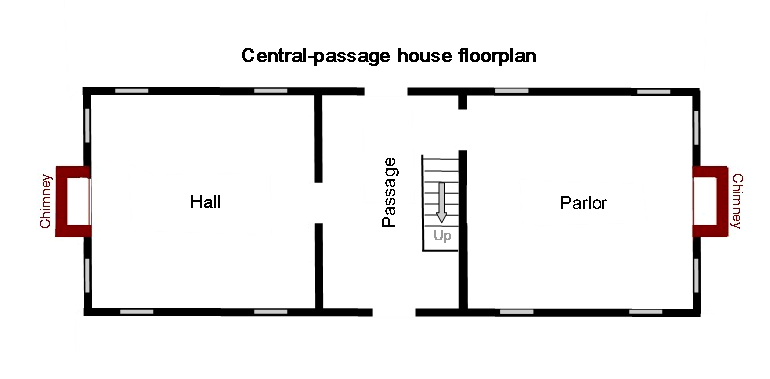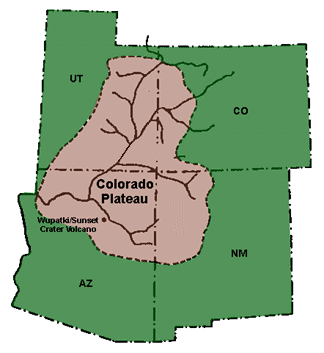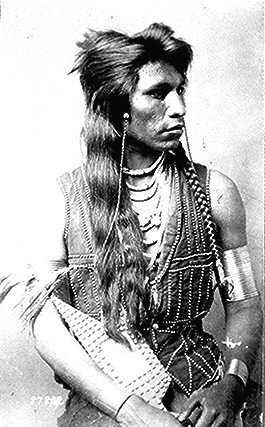|
Chase Home Museum Of Utah Folk Arts
The Chase Home Museum of Utah Folk Arts is operated by the Utah Division of Arts & Museums, and has been the permanent home of the Utah State Folk Arts Collection since 1987 and is the only museum in the United States that is dedicated to displaying a state-owned collection of contemporary folk art produced by its residents. It is a venue for Utah's diverse artists and communities to share their folk art including: crafts, music, and dance. In addition to rotating exhibits, annual concerts, and hands-on workshops, the Chase Home Museum houses an archive of fieldwork recordings and photographs that document Utah's folk art and traditional culture. The Chase Home Museum currently has three permanent exhibition galleries and one temporary exhibition gallery. History In 1847, Isaac Chase emigrated to Utah with Mormon pioneers and quickly continued his vocation by building a sawmill and gristmill on the outskirts of the newly formed settlement of Salt Lake City, Utah. In the early 1850 ... [...More Info...] [...Related Items...] OR: [Wikipedia] [Google] [Baidu] |
Liberty Park (Salt Lake City)
Liberty Park is a popular Urban park, public urban park in Salt Lake City, Utah. It is the city's second-largest public park, at , being surpassed only by Sugarhouse Park, Sugar House Park which has . The park features a pond with two islands, and is also the location of Tracy Aviary. The park is listed on the National Register of Historic Places (NRHP) and it includes the Isaac Chase Mill, which is also NRHP-listed. The park is prominently featured in all seasons of the Disney Channel original series ''Andi Mack'', however, it is never mentioned by name. Facilities Public facilities include playgrounds, restrooms, bowery, concession stand, children's play areas, picnic areas, large grassy areas, Horseshoes (game), horseshoe pits, a swimming pool, basketball courts, volleyball courts, tennis courts, bocce ball courts, a 1.5-mile woodchip jogging path, a 1.42-mile paved jogging path, seasonal amusement rides and a greenhouse. Other seasonal activities and public facilities i ... [...More Info...] [...Related Items...] OR: [Wikipedia] [Google] [Baidu] |
Central-passage House
The central-passage house, also known variously as central hall plan house, center-hall house, hall-passage-parlor house, Williamsburg cottage, and Tidewater-type cottage, was a vernacular, or folk form, house type from the colonial period onward into the 19th century in the United States. It evolved primarily in colonial Maryland and Virginia from the hall and parlor house, beginning to appear in greater numbers by about 1700. It partially developed as greater economic security and developing social conventions transformed the reality of the American landscape, but it was also heavily influenced by its formal architectural relatives, the Palladian and Georgian styles with their emphasis on symmetry. Architectural features The central-passage house was built much like the earlier hall and parlor house, except that its hall and parlor were divided by a central passageway. In fact, in many of the earliest examples a hall-parlor arrangement had a second partition added inside th ... [...More Info...] [...Related Items...] OR: [Wikipedia] [Google] [Baidu] |
Ute Mountain Ute Tribe
The Ute Mountain Ute Tribe (Ute dialect: Wʉgama Núuchi) is one of three federally recognized tribes of the Ute Nation, and are mostly descendants of the historic Weeminuche Band who moved to the Southern Ute reservation in 1897. Their reservation is headquartered at Towaoc, Colorado on the Ute Mountain Ute Indian Reservation in southwestern Colorado, northwestern New Mexico and small sections of Utah. History The Ute Mountain Ute Tribe are descendants of the Weeminuche bandPritzker, 245 (''Weminuche'', ''Weemeenooch'', ''Wiminuc'', ''Guiguinuches'') lived west of the Great Divide along the Dolores River of western Colorado, in the Abajo Mountains, in the Valley of the San Juan River its northern tributaries and in the San Juan Mountains including eastern Utah. They moved to the Southern Ute reservation in 1897. Two thousand years ago, the Utes lived and ranged in the mountains and desert over much of the Colorado Plateau present day eastern Utah, western Colorado, northern Ar ... [...More Info...] [...Related Items...] OR: [Wikipedia] [Google] [Baidu] |
Shoshone
The Shoshone or Shoshoni ( or ) are a Native American tribe with four large cultural/linguistic divisions: * Eastern Shoshone: Wyoming * Northern Shoshone: southern Idaho * Western Shoshone: Nevada, northern Utah * Goshute: western Utah, eastern Nevada They traditionally speak the Shoshoni language, part of the Numic languages branch of the large Uto-Aztecan language family. The Shoshone were sometimes called the Snake Indians by neighboring tribes and early American explorers. Their peoples have become members of federally recognized tribes throughout their traditional areas of settlement, often co-located with the Northern Paiute people of the Great Basin. Etymology The name "Shoshone" comes from ''Sosoni'', a Shoshone word for high-growing grasses. Some neighboring tribes call the Shoshone "Grass House People," based on their traditional homes made from ''sosoni''. Shoshones call themselves ''Newe'', meaning "People".Loether, Christopher"Shoshones."''Encyclopedia of the Gr ... [...More Info...] [...Related Items...] OR: [Wikipedia] [Google] [Baidu] |
Southern Paiute
The Southern Paiute people are a tribe of Native Americans who have lived in the Colorado River basin of southern Nevada, northern Arizona, and southern Utah. Bands of Southern Paiute live in scattered locations throughout this territory and have been granted federal recognition on several reservations. The first European contact with the Southern Paiute occurred in 1776, when fathers Silvestre Vélez de Escalante and Francisco Atanasio Domínguez encountered them during an attempt to find an overland route to the missions of California. They noted that some of the Southern Paiute men "had thick beards and were thought to look more in appearance like Spanish men than native Americans". Before this date, the Southern Paiute suffered slave raids by the Navajo and the Ute. The arrival of Spanish and later Euro-American explorers into their territory increased slave raiding by other tribes. In 1851, Mormon settlers strategically occupied Paiute water sources, which created a depend ... [...More Info...] [...Related Items...] OR: [Wikipedia] [Google] [Baidu] |
Ute People
Ute () are the Indigenous people of the Ute tribe and culture among the Indigenous peoples of the Great Basin. They had lived in sovereignty in the regions of present-day Utah and Colorado in the Southwestern United States for many centuries until European settlers conquered their lands. The state of Utah is named after the Ute tribe. In addition to their ancestral lands within Colorado and Utah, their historic hunting grounds extended into current-day Wyoming, Oklahoma, Arizona, and New Mexico. The tribe also had sacred grounds outside their home domain that were visited seasonally. There were 12 historic bands of Utes. Although they generally operated in family groups for hunting and gathering, the communities came together for ceremonies and trading. Many Ute bands were culturally influenced by neighboring Native American tribes and Puebloans, whom they traded with regularly. After contact with early European colonists, such as the Spanish, the Ute formed trading relatio ... [...More Info...] [...Related Items...] OR: [Wikipedia] [Google] [Baidu] |
Goshute
The Goshutes are a tribe of Western Shoshone Native Americans. There are two federally recognized Goshute tribes today: * Confederated Tribes of the Goshute Reservation, located in Nevada and Utah * Skull Valley Band of Goshute Indians of Utah of the Skull Valley Indian Reservation, located in Utah Culture The Goshute (Gosiute) refer to themselves as the ''Newe'' ɨwɨor ''Newenee'' ɨwɨnɨɨ('Person' or 'People'), though at times have used the term ''Kutsipiuti'' (''Gutsipiuti'') or ''Kuttuhsippeh'', meaning "People of the dry earth" or "People of the Desert" (literally: "dust, dry ashes People"). Neighboring Numic-speaking peoples used variants including ''Kusiutta'' / ''Kusiyuttah'', ''Kusiyuttah,'' ''Newenee'', ''Gusiyuta'', or ''Kusiyutah'' when referring to the Goshute People. English variants included: ''Goshutes, Go-sha-utes, Goship-Utes, Goshoots, Gos-ta-Utes, Gishiss, Goshen Utes, Kucyut, and Gosiutsi'' . These names suggest a closer affinity among the Goshute and ... [...More Info...] [...Related Items...] OR: [Wikipedia] [Google] [Baidu] |
Kachina
A kachina (; also katchina, katcina, or katsina; Hopi: ''katsina'' , plural ''katsinim'' ) is a spirit being in the religious beliefs of the Pueblo peoples, Native American cultures located in the south-western part of the United States. In the Pueblo cultures, kachina rites are practiced by the Hopi, Zuni, Hopi-Tewa, and certain Keresan tribes, as well as in most Pueblo tribes in New Mexico. The kachina concept has three different aspects: the supernatural being, the kachina dancers, and kachina dolls (small dolls carved in the likeness of the kachina, that are given only to those who are, or will be responsible for the respectful care and well-being of the doll, such as a mother, wife, or sister). Overview Kachinas are spirits or personifications of things in the real world. These spirits are believed to visit the Hopi villages during the first half of the year. The local pantheon of kachinas varies from pueblo community to community. A kachina can represent anything in t ... [...More Info...] [...Related Items...] OR: [Wikipedia] [Google] [Baidu] |
Cradleboard
Cradleboards (, se, gietkka, sms, ǩiõtkâm, smn, kietkâm, sje, gietkam) are traditional protective baby-carriers used by many indigenous cultures in North America and throughout northern Scandinavia amongst the Sámi. There are a variety of styles of cradleboard, reflecting the diverse artisan practices of indigenous cultures. Some indigenous communities in North America still use cradleboards. Structure Cradleboards are used for the first few months of an infant's life, when a portable carrier for the baby is a necessity. Some cradleboards are woven, as with the Apache. Woven cradleboards are made of willow, dogwood, tule, or cattail fibres. Wooden cradleboards are made by the Iroquois and Penobscot. Navajo cradleboards are made with a Ponderosa pine frame with buckskin laces looped through the frame. Whatever materials are used to make cradleboards, they share certain structural elements. Cradleboards are built with a broad, firm protective frame for the infant's sp ... [...More Info...] [...Related Items...] OR: [Wikipedia] [Google] [Baidu] |
Quillwork
Quillwork is a form of textile embellishment traditionally practiced by Indigenous peoples of North America that employs the quills of porcupines as an aesthetic element. Quills from bird feathers were also occasionally used in quillwork. History Porcupine quillwork is an art form unique to North America. Before the introduction of glass beads, quillwork was a major decorative element used by the peoples who resided in the porcupine's natural habitat,Gillow and Sentance 223 which included indigenous peoples of the Subarctic, Northeastern Woodlands, and Northern Plains. The use of quills in designs spans from Maine to Alaska.Orchard Quillworking tools were discovered in Alberta, Canada and date back to the 6th century CE. Cheyenne oral history, as told by Picking Bones Woman to George Bird Grinnell, says quilling came to their tribe from a man who married a woman, who hid her true identity as a buffalo. His son was also a buffalo. The man visited his wife and son in their buffalo ... [...More Info...] [...Related Items...] OR: [Wikipedia] [Google] [Baidu] |
Buckskin (leather)
Buckskin is the soft, pliable, porous preserved hide of an animal – usually deer – tanned in the same way as deerskin clothing worn by Native Americans. Some leather sold as "buckskin" may now be sheepskin tanned with modern chromate tanning chemicals and dyed to resemble real buckskin. Buckskin is preserved with a dressing of lubricant, physically manipulated to make it soft and pliable, and usually smoked with woodsmoke. Smoking gives buckskin its typical dark honey color, and is highly recommended. Smoking prevents the tanned hide from becoming stiff if it gets wet, and deters insects from eating it as well. Unsmoked buckskin is lighter, even white, in color. Clothing made of buckskin is referred to as buckskins Buckskins are clothing, usually consisting of a jacket and leggings, made from buckskin, a soft sueded leather from the hide of deer. Buckskins are often trimmed with a fringe – originally a functional detail, to allow the garment to s .... Notes ... [...More Info...] [...Related Items...] OR: [Wikipedia] [Google] [Baidu] |
Willow
Willows, also called sallows and osiers, from the genus ''Salix'', comprise around 400 speciesMabberley, D.J. 1997. The Plant Book, Cambridge University Press #2: Cambridge. of typically deciduous trees and shrubs, found primarily on moist soils in cold and temperate regions. Most species are known as willow, but some narrow-leaved shrub species are called osier, and some broader-leaved species are referred to as sallow (from Old English ''sealh'', related to the Latin word ''salix'', willow). Some willows (particularly arctic and alpine species) are low-growing or creeping shrubs; for example, the dwarf willow (''Salix herbacea'') rarely exceeds in height, though it spreads widely across the ground. Description Willows all have abundant watery bark sap, which is heavily charged with salicylic acid, soft, usually pliant, tough wood, slender branches, and large, fibrous, often stoloniferous roots. The roots are remarkable for their toughness, size, and tenacity to live ... [...More Info...] [...Related Items...] OR: [Wikipedia] [Google] [Baidu] |










